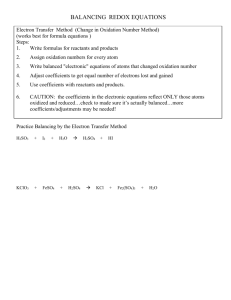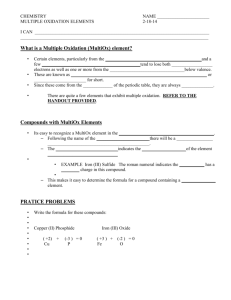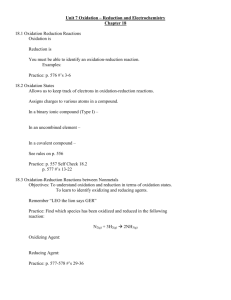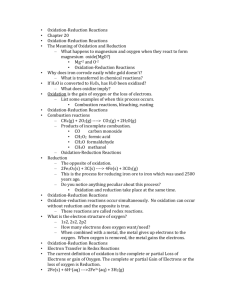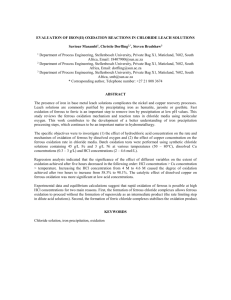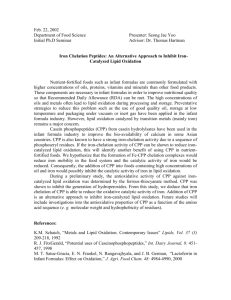Chapter 4 Word Study - Arson & Fire Investigation
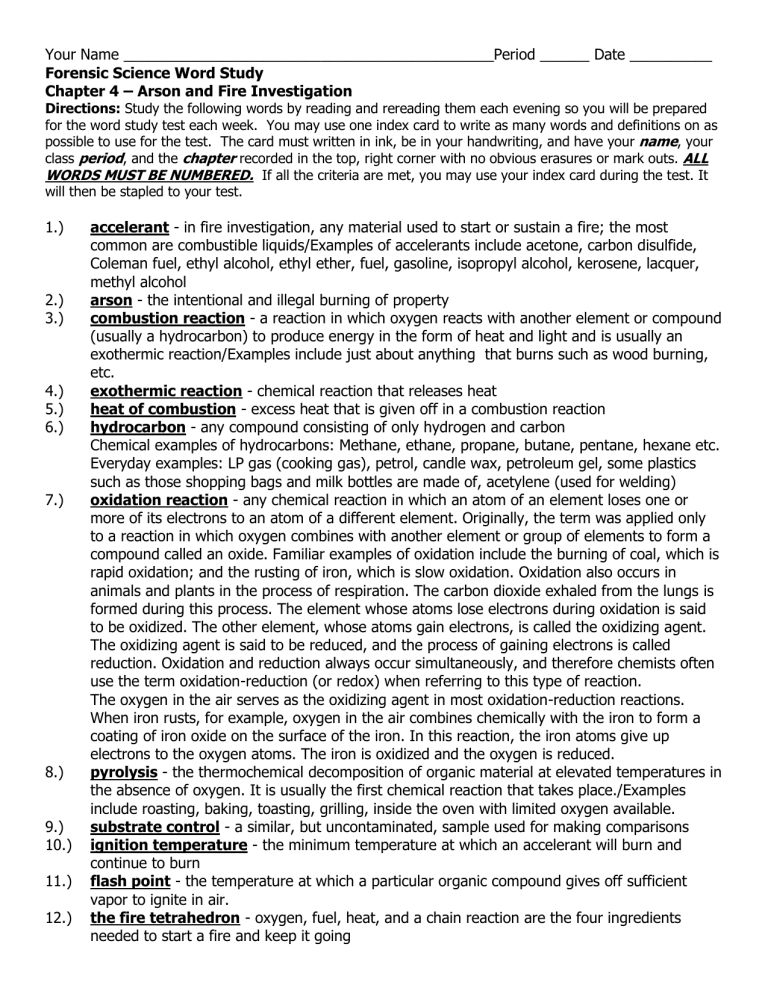
Your Name _____________________________________________Period ______ Date __________
Forensic Science Word Study
Chapter 4 – Arson and Fire Investigation
Directions: Study the following words by reading and rereading them each evening so you will be prepared for the word study test each week. You may use one index card to write as many words and definitions on as possible to use for the test. The card must written in ink, be in your handwriting, and have your class period , and the chapter name
recorded in the top, right corner with no obvious erasures or mark outs.
, your
ALL
WORDS MUST BE NUMBERED. If all the criteria are met, you may use your index card during the test. It will then be stapled to your test.
1.) accelerant - in fire investigation, any material used to start or sustain a fire; the most common are combustible liquids/Examples of accelerants include acetone, carbon disulfide,
Coleman fuel, ethyl alcohol, ethyl ether, fuel, gasoline, isopropyl alcohol, kerosene, lacquer, methyl alcohol
2.) arson - the intentional and illegal burning of property
3.) combustion reaction - a reaction in which oxygen reacts with another element or compound
(usually a hydrocarbon) to produce energy in the form of heat and light and is usually an exothermic reaction/Examples include just about anything that burns such as wood burning, etc.
4.) exothermic reaction - chemical reaction that releases heat
5.) heat of combustion - excess heat that is given off in a combustion reaction
6.) hydrocarbon - any compound consisting of only hydrogen and carbon
Chemical examples of hydrocarbons: Methane, ethane, propane, butane, pentane, hexane etc.
Everyday examples: LP gas (cooking gas), petrol, candle wax, petroleum gel, some plastics such as those shopping bags and milk bottles are made of, acetylene (used for welding)
7.) oxidation reaction - any chemical reaction in which an atom of an element loses one or more of its electrons to an atom of a different element. Originally, the term was applied only to a reaction in which oxygen combines with another element or group of elements to form a compound called an oxide. Familiar examples of oxidation include the burning of coal, which is rapid oxidation; and the rusting of iron, which is slow oxidation. Oxidation also occurs in animals and plants in the process of respiration. The carbon dioxide exhaled from the lungs is formed during this process. The element whose atoms lose electrons during oxidation is said to be oxidized. The other element, whose atoms gain electrons, is called the oxidizing agent.
The oxidizing agent is said to be reduced, and the process of gaining electrons is called reduction. Oxidation and reduction always occur simultaneously, and therefore chemists often use the term oxidation-reduction (or redox) when referring to this type of reaction.
The oxygen in the air serves as the oxidizing agent in most oxidation-reduction reactions.
When iron rusts, for example, oxygen in the air combines chemically with the iron to form a coating of iron oxide on the surface of the iron. In this reaction, the iron atoms give up electrons to the oxygen atoms. The iron is oxidized and the oxygen is reduced.
8.) pyrolysis - the thermochemical decomposition of organic material at elevated temperatures in the absence of oxygen. It is usually the first chemical reaction that takes place./Examples include roasting, baking, toasting, grilling, inside the oven with limited oxygen available.
9.) substrate control - a similar, but uncontaminated, sample used for making comparisons
10.) ignition temperature - the minimum temperature at which an accelerant will burn and continue to burn
11.) flash point - the temperature at which a particular organic compound gives off sufficient vapor to ignite in air.
12.) the fire tetrahedron - oxygen, fuel, heat, and a chain reaction are the four ingredients needed to start a fire and keep it going




